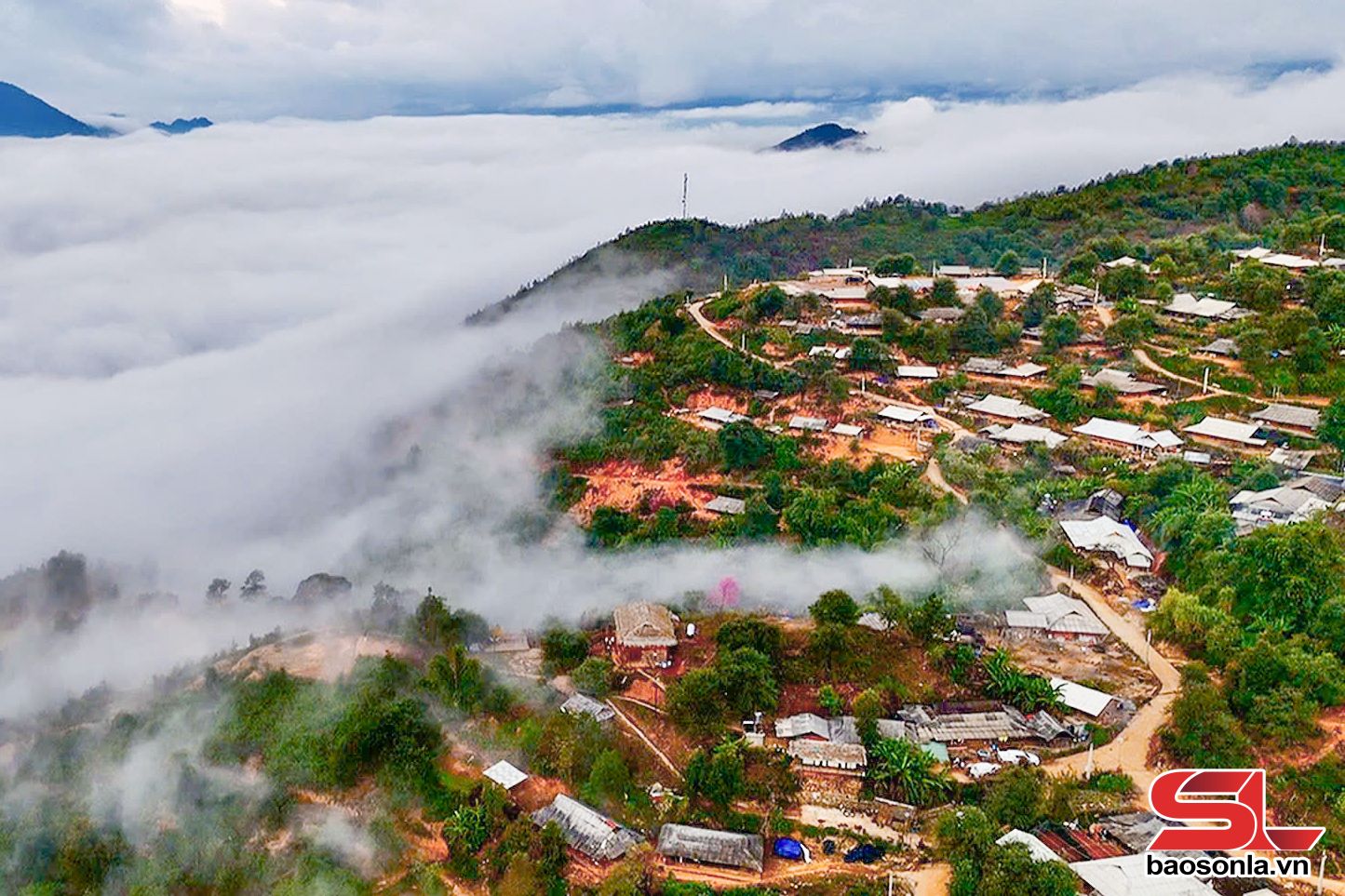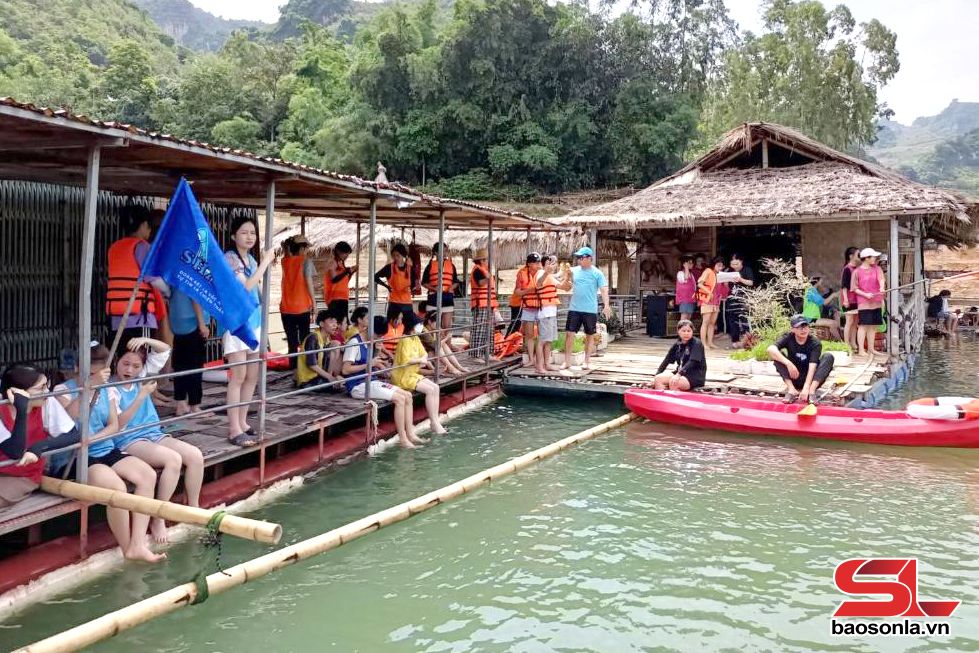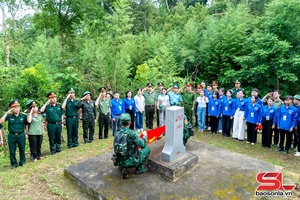These initiatives have created over 100 direct jobs and more than 300 indirect jobs. Since the beginning of 2025, Muong La has welcomed nearly 140,000 visitors, including 700 foreigners, generating an estimated revenue of 48.8 billion VND (1.88 million USD).

A corner of Nam Nghep hamlet, Ngoc Chien commune, Muong La district.
In February 2024, the Chieng San Ecotourism Cooperative was established in Nong Luong hamlet, Chieng San commune, with seven founding members. The cooperative invested over 2 billion VND in restoring Tat Pha Waterfall, upgrading over 1 km of access road, constructing a dam, renovating lodging and dining facilities, and introducing fish and goat farming to enhance the landscape. "After just over a year of operation, the site has begun attracting a significant number of tourists, especially during holidays and weekends," said Director Cam Van Luan.
In October 2024, the Nam Nghep Cooperative was founded in Nam Nghep hamlet, Ngoc Chien commune, aiming to help the local Mong ethnic community develop tourism through cultural and natural assets. After nearly eight months, the cooperative and locals have launched 18 tourism products such as hiking, cloud hunting, and flower viewing. "Currently, the cooperative has 10 members and operates three homestays, each welcoming around 20 guests daily. We’re encouraging more households to join, improve the landscape, and expand the homestay model," said Director Thao A Vang. Following the 2025 Son Tra (Hawthorn) Flower Festival, the cooperative also introduced four local specialty products: Son Tra tea, wild honey, Son Tra liquor, and indigenous herbal products.

The tourism momentum has also transformed lives. Khang A Nha, once a reserved farmer, has become an enthusiastic and skilled tourism advocate. As a member of the Nam Nghep Cooperative, he now manages communications, guides tours, and operates a local motorcycle taxi service. "Thanks to the support and training provided by local authorities, our tours now attract more visitors, improving household incomes and bringing new vitality to our hamlet," Nha shared.
In Phieng Hua La hamlet, Muong Trai commune, several households have developed tourism experiences around the Son La hydropower reservoir. The Muong Trai floating house complex—built from bamboo with thatched roofs—offers a natural, rustic experience. The operators have invested in a motorboat for 15 passengers and partnered with three other tourist boats (15–30 guests each). In 2024, Lo Thi Chuong launched a guesthouse with two private rooms and a dormitory, capable of serving 20 guests per day.
Vice Chairwoman of Muong La district Mua Thi Sinh said the district is actively supporting cooperatives and local residents in promoting tourism by maintaining a dedicated tourism website and linking it to the provincial site. The district is also using digital platforms and social media to boost visibility, while organising training sessions for homestay owners and tourism workers, and developing cultural performances for visitors. Muong La has also restored and maintained several traditional festivals, including the New Rice Festival, the Son Tra Flower Festival in Ngoc Chien commune, the Pang A Festival of the La Ha people, and the Nang Han (Miss Han) Festival in Muong Trai commune.
Under its 2020–2025 Tourism Development Plan, Muong La focuses on promotional campaigns, regional tourism links, and developing ecological and cultural tourism products. The district encourages infrastructure investment, human resource development, and effective public management. Green agriculture tied to tourism is also promoted, with the goal of building unique, differentiated tourism products based on local potential and advantages—positioning tourism as a key driver of socio-economic development.




















.jpg)
(1).jpg)

You have 500/500 characters left
Please enter 5 or more characters!!!